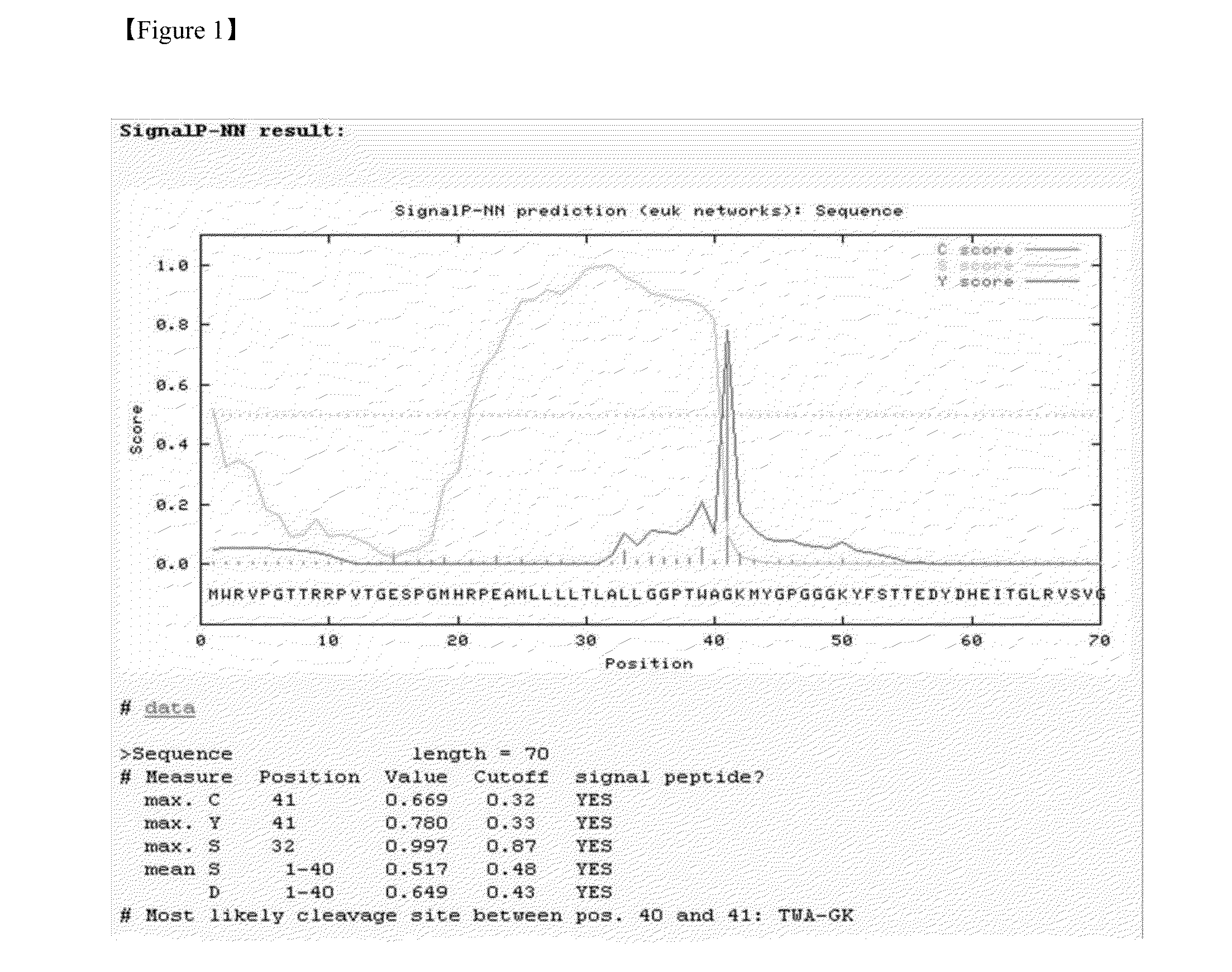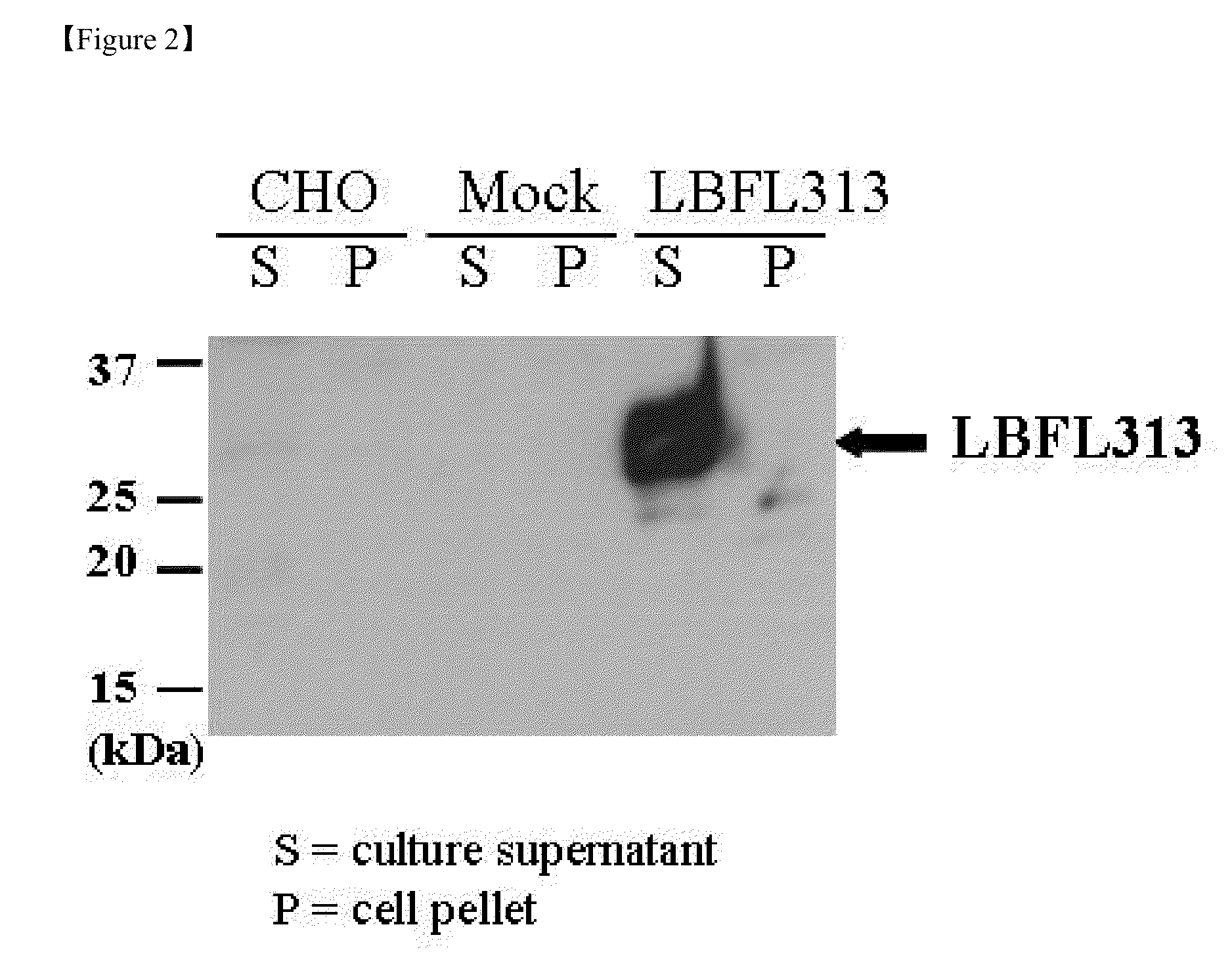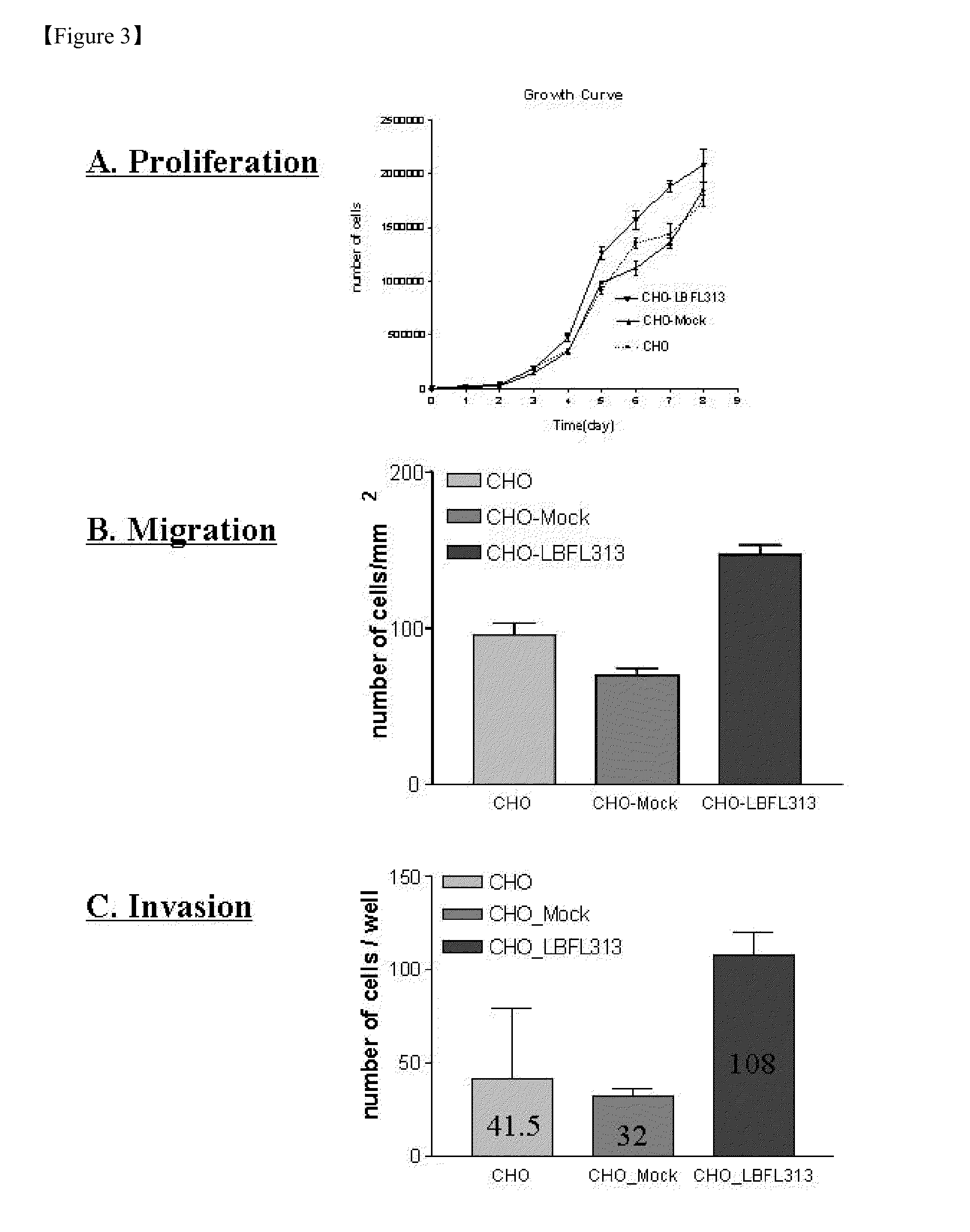Gene family (lbfl313) associated with pancreatic cancer
a gene family and pancreatic cancer technology, applied in the field of pancreatic cancer tissues and gene expression changes, can solve the problems of difficult early diagnosis, poor prognosis, and the impact of conventional cancer therapies on prognosis or disease outcome,
- Summary
- Abstract
- Description
- Claims
- Application Information
AI Technical Summary
Benefits of technology
Problems solved by technology
Method used
Image
Examples
example 1
[0156]Identification of Differentially Expressed mRNA in Pancreatic Adenocarcinoma
[0157]Patient tissue samples were derived from Korean patients and classified into two groups. One group of consisted of patients who had been diagnosed with pancreatic adenocarcinoma. The patients in this group, six men and three women, ranged in age from 51-70. The second group of patients had been diagnosed with normal pancreas. In this group of three men, the patients ranged in age from 63-66. Histological analysis of each of the tissue samples was performed and samples were segregated into either non-cancerous or cancerous categories.
[0158]With minor modifications, the sample preparation protocol followed the Affymetrix GeneChip Expression Analysis Manual. Frozen tissue was first ground to powder using the Spex Certiprep 6800 Freezer Mill. Total RNA was then extracted using Trizol (Life Technologies). Next, mRNA was isolated using the Oligotex mRNA Midi kit (Qiagen). Using 1-5 mg of mRNA, double s...
example 2
[0165]Cloning of Full-Length Human cDNA (LBFL313) Corresponding to Differentially Expressed mRNA Species
[0166]The full length cDNA having SEQ ID NO: 1 was obtained by the oligo-pulling method. Briefly, a gene-specific oligo was designed based on the sequence of LBFL313. The oligo was labeled with biotin and used to hybridize with 2 ng of single strand plasmid DNA (cDNA recombinants) from a human palcenta library following the procedures of Sambrook et al. The hybridized cDNAs were separated by streptavidin-conjugated beads and eluted by heating. The eluted cDNA was converted to double strand plasmid DNA and used to transform E. coli cells (DH10B) and the longest cDNA was screened. After positive selection was confirmed by PCR using gene-specific primers, the cDNA clone was subjected to DNA sequencing.
[0167]The nucleotide sequence of the full-length human cDNAs corresponding to the differentially regulated mRNA detected above is set forth in SEQ ID NO: 1. The cDNA comprises 777 base ...
example 3
[0171]Production of LBFL313 Transfected Cell Lines
[0172]The coding region of LBFL313 was amplified by PCR using forward primer (5′-TTG GGATCCGTATAAAGGCGATGTGGAGG-3′) incorporating the BamHI site and reverse primer (5′-ACC ATC TAG AGC GAC CCA CGG GTG AGT-3′) incorporating the XbaI site. PCR was performed using the TaqPlus precision DNA polymerase (Stratagene, CA) according to manufacturer's instruction. PCR amplification cycles involved initial denaturation at 94° C. for 2 min, and 27 cycles; 94° C. for 30 sec, 50° C. for 30 sec, 72° C. for 1 min, followed by a final extension at 72° C. for 10 min. The PCR product was cloned into the BamHI and XbaI site of the mammalian expression vector pcDNA3.1-mycHis (Invitrogen). The cloned plasmid (pLFG250) was sequenced through the region of the cloning site to confirm its primary structure.
[0173]Subconfluent CHO cells were stably transfected with pLFG250 or with pcDNA3.1-mycHis vector alone using LipofectaminePLUS reagent (Invitrogen) accordin...
PUM
| Property | Measurement | Unit |
|---|---|---|
| pH | aaaaa | aaaaa |
| pH | aaaaa | aaaaa |
| ionic strength | aaaaa | aaaaa |
Abstract
Description
Claims
Application Information
 Login to View More
Login to View More - R&D
- Intellectual Property
- Life Sciences
- Materials
- Tech Scout
- Unparalleled Data Quality
- Higher Quality Content
- 60% Fewer Hallucinations
Browse by: Latest US Patents, China's latest patents, Technical Efficacy Thesaurus, Application Domain, Technology Topic, Popular Technical Reports.
© 2025 PatSnap. All rights reserved.Legal|Privacy policy|Modern Slavery Act Transparency Statement|Sitemap|About US| Contact US: help@patsnap.com



